How can you tell if your fish is sick? Here are the physical signs of disease in fish you should keep an eye out for if you owner fish. Behavioral signs of disease will be addressed in the next post.
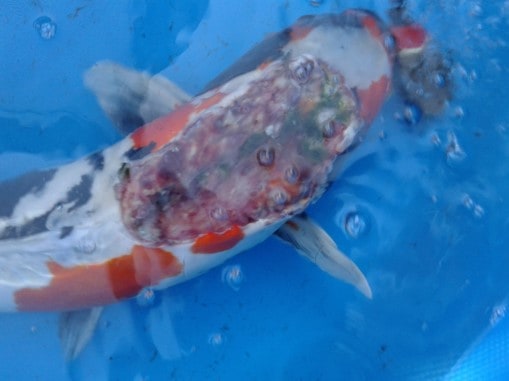
Trauma
Most trauma events in fish present as open wounds. The fish above was in an outdoor pond that was attacked by a hawk. These wounds appear suddenly, commonly overnight or in 1 day. They can be self-inflicted with severe parasite infestations, such as flukes, white spot, lice, Trichodina and others.
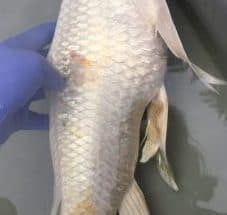
Fungus
Most fungus in fish is secondary to another stressor, such as poor water quality, low temperatures or inadequate nutrition. It is important to differentiate fungus from Columnaris spp. infection, which is a bacteria that can present with similar clinical signs.
Coelomic Masses
Koi, in particular, are prone to gonadal sarcomas. This may be one of the hardest issues for pet fish owners to catch, since tumors are only noted when they exceed the fish’s size. Ultrasound screenings can detect these masses before they get too large for surgical removal.
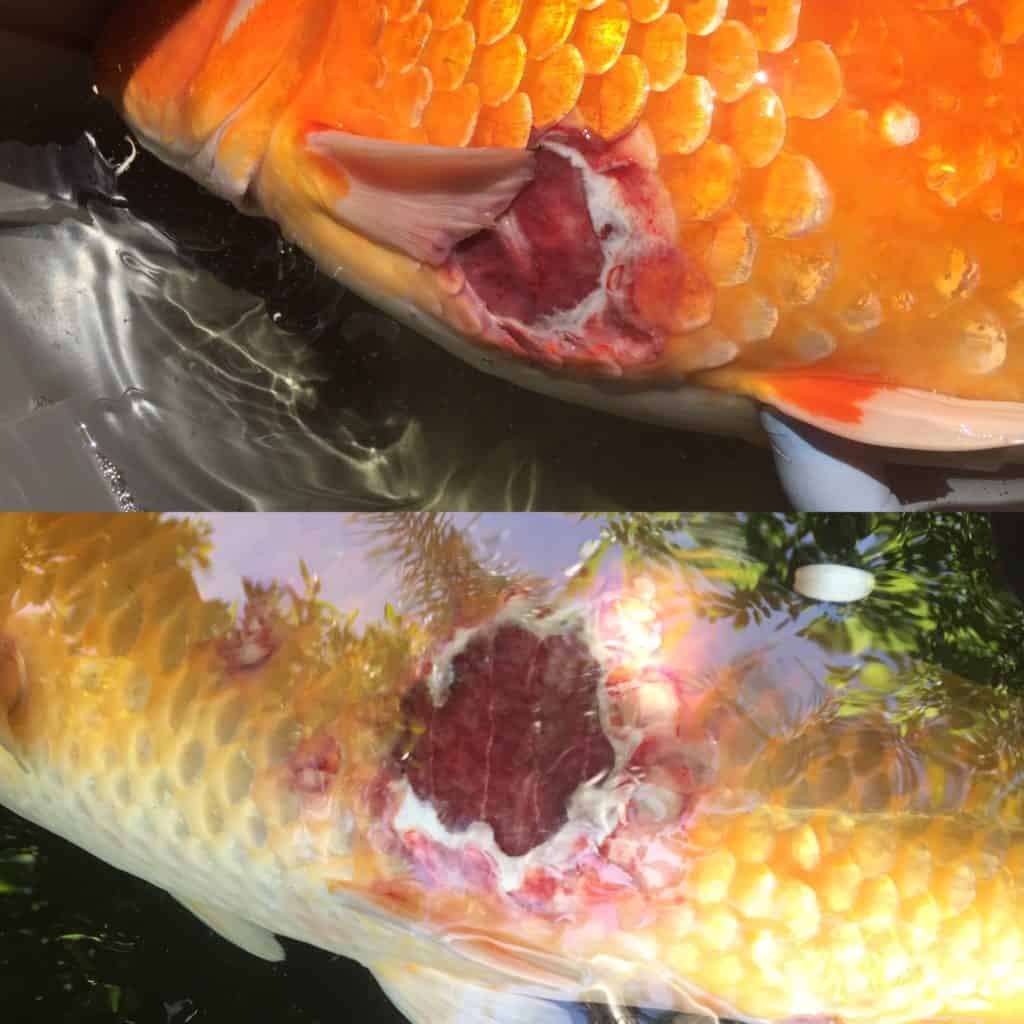
Ulcers
There are many types of ulcers that may present in fish. Some occur very quickly and can almost be mistaken for trauma, while others are slow growing. 9 times out of 10, ulcers are secondary to other stressors, such as poor water quality.
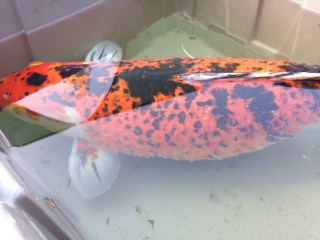
Dropsy
“Dropsy” is NOT A DISEASE! This clinical sign is a symptom of either kidney or gill malfunction in freshwater fish. When a fish is unable to rid their body of excess water, extra fluid builds up in all the body tissues, including the skin between scales, causing the typical “dropsy” pinecone-like appearance. There are many potential causes of this appearance. Do not assume it is bacterial!

Spots
Spots are a clear sign of disease in fish and can be all colors and locations on the body. Depending on the disease process present, spots can occur with fungus, ulcers, parasites or other diseases. As they age, some fish will change their coloration. Goldfish may go from white, orange or black to any combination thereof. Koi will readily lose or gain pigments depending on their genetics, water chemistry and diet.

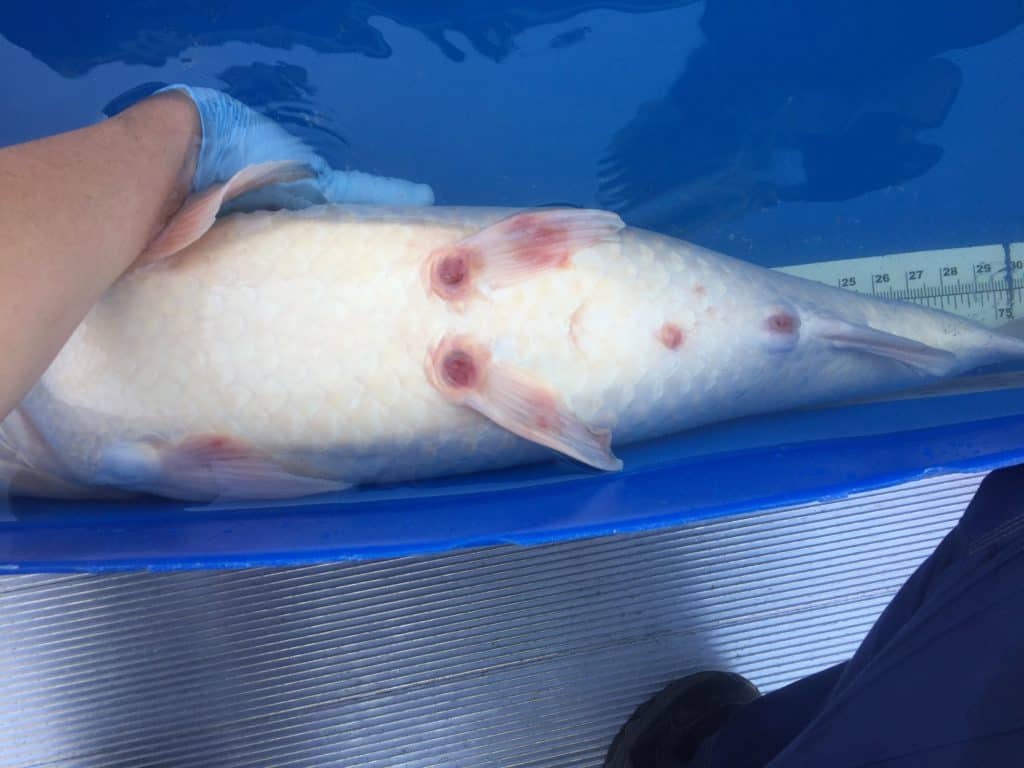

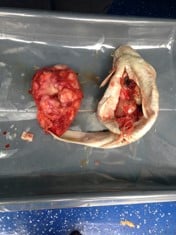
Pingback: Behavioral Signs of Disease in Fish – Aquatic Veterinary Services
Pingback: Fish Popeye - Aquatic Veterinary Services